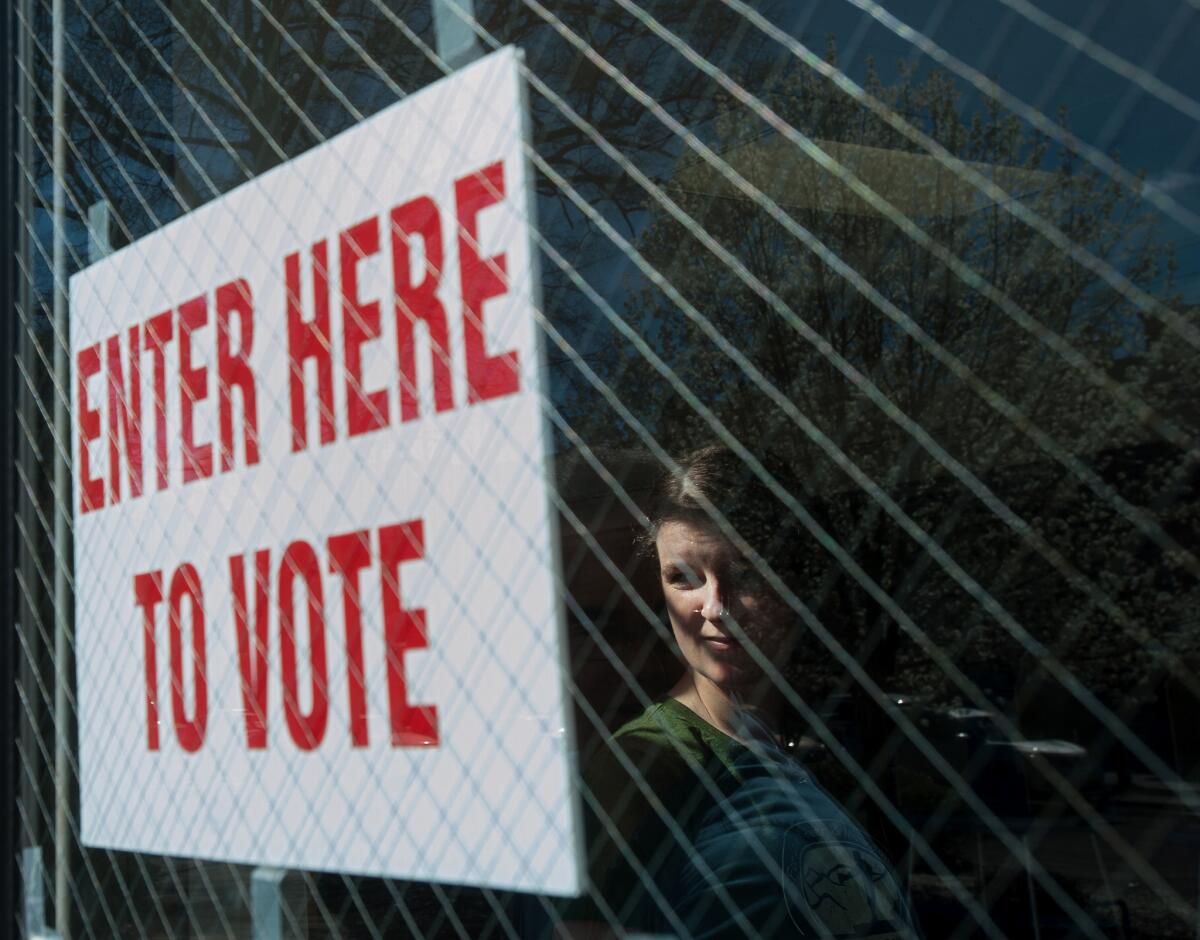Op-Ed: We’re rarely rational when we vote because we’re rarely rational, period

Science can tell us lots about how voters will make their decisions in 2016. To appreciate those findings, first free yourself of the idea that humans are rational beings.
Rationality has taken a hit in various domains of decision-making. Economics used to be thought of as a realm of pure rationality, something disproven, for starters, by the million-plus Pet Rocks sold around Christmas in 1975. Formal behavioral economics research comes to much the same conclusion more systematically. For example, people make radically different choices about an economic scenario depending on whether it is described in terms of risk or gain (“you have a 50% chance of losing X number of dollars,” versus “you have a 50% chance of gaining X”).
Human decision-making is subject to implicit influences in other realms as well. In one study involving thousands of cases of parole-board decisions, a highly significant predictor of whether an inmate was granted parole was how long it had been since the judge had eaten. Justice may be blind, but don’t expect to get a sympathetic hearing from someone whose stomach is gurgling.
Other research shows our sensitivity to all sorts of unconscious cues. People think potato chips taste better if they hear crunching sounds in the background as they eat, rate a beverage as tasting better if it’s served in more expensive-looking surroundings. Ask people their favorite detergent; if they’ve just read a paragraph containing the word “ocean,” they’re more likely to choose Tide — and then concoct some supposedly rational reason why it’s the very best.
Which brings us to how people go about voting for a political candidate. It’s a rare voter who carefully reads a candidate’s position papers on every conceivable topic. Instead, we typically vote based on a candidate’s stance on a subset of topics, assuming there will be a certain consistency on other topics. Or we follow party lines, or choose based on endorsements — if A agrees closely with B’s politics, and B is voting for C, A is on pretty safe ground voting for C even if C is a complete unknown.
Another conscious component of political decision-making is voting for experience or competence, rather than a platform. This is so common that one study found that candidates judged to look more competent had won elections 68% of the time (perhaps we don’t so much vote for competence as for the appearance of it). Competence at least seems like a pretty rational criterion — after all, who wouldn’t want competence in our leaders? — until you wind up voting for someone who competently implements things you oppose.
Studies in a number of countries show that people can identify liberals versus conservatives at above-chance levels merely by seeing their faces.
Even when judging competence isn’t the goal, looks influence whom we vote for. This too isn’t totally irrational, as studies in a number of countries show that people can identify liberals versus conservatives at above-chance levels merely by seeing their faces. But then rationality is completely left behind.
In one well-studied phenomenon, when voters consider two candidates with identical positions, they tend to choose the one independently rated to be better looking. For male candidates this means tall, symmetrical features, high forehead, prominent brow ridges, jutting jaw. It’s part of a larger pattern — people judged to be attractive are typically rated as having better personalities, higher moral standards, as kinder and more honest. When job applicants present the same resume, the better looking is more likely to be hired. If miscreants are convicted of the same crime, the better looking tends to serve less time.
The predilection for good looks seems to be connected to a remarkable finding: Some of the same parts of the frontal cortex are activated when assessing the beauty of a face as when assessing the moral goodness of an act.
Other implicit factors come into play at election time. One study examined the campaign speeches of candidates in every prime minister election in Australian history. In 80% of those elections, the winner was the politician who used more collective pronouns (i.e., “we” and “us”). Then there are studies showing that raising the levels of the hormone oxytocin in people’s brains makes them more likely to perceive hypothetical candidates as believable and trustworthy; elevate testosterone levels, and the opposite occurs.
There are also what researchers call contingent automatic preferences. For example, in scenarios concerning war, subjects tend to prefer (male) candidates with older, more masculine faces; during peace time, it’s younger, more feminine faces.
Probably the most striking thing about any of these biases is that they are already in place long before we understand the first thing about economics or geopolitics. This was shown in a 2009 paper published in the prestigious journal Science, a paper that should be required reading just before election day each year. Show kids pairs of faces of candidates from various obscure elections. Tell them that they are about to take a long journey by boat; which of these two people would they want as their captain? And kids, ages 5 through 13, picked the winner a boggling 71% of the time.
Think about that. The automatic biases we bring to voting are already falling into place in 5-year olds considering who should captain their boat on a voyage with the Teletubbies to stop the pirates menacing to Candyland. Subterranean, unconscious forces are constantly percolating up to influence our decision-making, and yet research also indicates that the more we’re aware of it, the more we can resist it. Try to remember that as you cast your ballot this year: You may be falling for the crunching sounds in the background.
Robert M. Sapolsky is a professor of neuroscience at Stanford University. He is a contributing writer to Opinion.
Follow the Opinion section on Twitter @latimesopinion and Facebook
More to Read
A cure for the common opinion
Get thought-provoking perspectives with our weekly newsletter.
You may occasionally receive promotional content from the Los Angeles Times.










